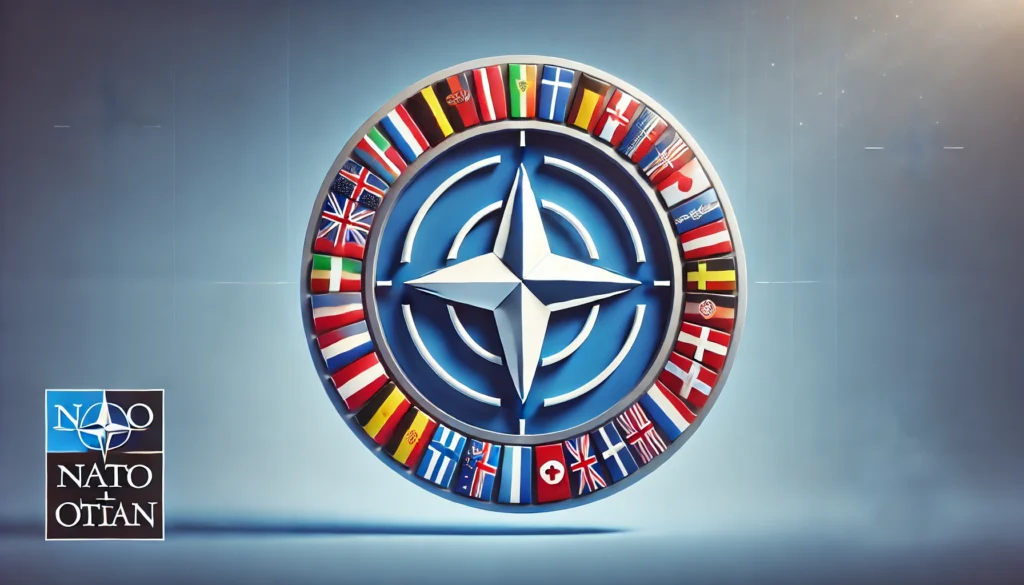
Imagine battlefields where decisions are made in milliseconds, faster than any human could react.
With the rise of agentic AI, we’re stepping into a world where autonomous weapons systems and military strategies are no longer just science fiction—they’re becoming a reality.
How does agentic AI fit into all this? And more importantly, what does it mean for the future of military operations? This article dives into the evolving role of AI in modern warfare, the potential benefits, and the significant concerns that arise.
The Emergence of Autonomous Weapons Systems
Autonomous weapons systems (AWS) are a new breed of military technology. They’re capable of selecting and engaging targets without direct human input. Think about drones that can navigate hostile terrain on their own or missile systems that adapt in real-time to avoid interception.
These systems rely on AI to analyze vast amounts of data—radar signals, satellite images, and even enemy communications. The AI can identify patterns, predict enemy movements, and make decisions to engage or disengage. With agentic AI stepping in, these systems are becoming smarter and more independent.
While autonomy allows for faster, more efficient decision-making, it also raises questions about control. How much should we trust a machine to make life-or-death choices?
How AI is Revolutionizing Military Operations
Beyond weapons, AI is transforming the way military operations are conducted. One of the biggest advantages is real-time data analysis. Agentic AI can process information from multiple sources—satellite feeds, surveillance drones, and ground sensors—instantly. This allows commanders to make quicker decisions based on the latest intelligence.
AI also assists in strategic planning. Instead of relying solely on human analysis, AI algorithms can simulate various scenarios. By predicting outcomes, these systems can recommend the best course of action, often proposing unconventional strategies that a human may overlook.

In addition, AI helps improve communication within the military. Autonomous systems can coordinate movements, ensuring that units work together seamlessly even in chaotic environments. However, this level of coordination could also pose a threat if these systems are hacked or manipulated by enemy forces.
Agentic AI and the Ethical Dilemmas of Warfare
When machines are making decisions on the battlefield, who is responsible for the consequences? This is where the ethical debate around agentic AI comes into play.
For instance, autonomous weapons could potentially engage enemy targets without considering the broader context—like distinguishing between combatants and civilians. These AI systems operate based on predefined rules and data. However, can they fully understand the nuances of every situation?
Many argue that even if agentic AI can outperform humans in certain aspects of decision-making, it lacks the moral judgment needed in war. Others counter that removing human emotion from these decisions could lead to more precise and rational outcomes on the battlefield, potentially saving lives.
The Race for AI Dominance in Military Technology
It’s no secret that the world’s leading military powers are in a race for AI supremacy. Countries like the United States, China, and Russia are investing heavily in military AI research, knowing that whoever leads in AI will have a massive advantage in future conflicts.
From autonomous drones to AI-guided missile systems, these technologies could reshape the global balance of power. For instance, China has announced plans to become the world leader in AI by 2030, with a significant focus on military applicationsse powers push ahead, smaller nations could find themselves at a severe disadvantage.
This imbalance might force countries to engage in cyber warfare or other non-traditional means to even the playing field.
Potential Risks and Unintended Consequences
As exciting as the advancements in AI-driven warfare might be, they come with significant risks. One major concern is unintended escalation. Autonomous systems are programmed to react to threats swiftly. But what happens if these systems misinterpret a signal, leading to an unnecessary military conflict?

There’s also the issue of an AI arms race. If every nation develops highly autonomous weapons, the world could face a scenario where wars are fought almost entirely by machines. This could lead to a detachment from the human cost of conflict, making war more likely.
On a more technical level, the increasing reliance on agentic AI opens up vulnerabilities. If an autonomous system is hacked or taken over by the enemy, the damage could be catastrophic. Imagine an AI-driven missile system being turned against its operators.
The Balance of Power: Humans and AI Working Together
In the short term, it’s unlikely that AI will fully replace human decision-making in military operations. Rather, the most effective solutions will involve collaboration between humans and AI. Humans bring judgment, creativity, and an understanding of moral consequences—qualities that AI lacks. Meanwhile, AI offers speed, precision, and the ability to process vast amounts of information in seconds.
This human-AI partnership could form the backbone of future military strategy. We may see hybrid operations, where humans oversee autonomous systems, stepping in only when necessary to make final decisions.
Global Regulations and the Call for AI Ethics in Warfare
As agentic AI continues to develop, the world is faced with a critical question: How do we regulate AI in warfare?
Some experts call for international agreements to limit the use of fully autonomous weapons systems. Groups like the Campaign to Stop Killer Robots argue for a global ban on these technologies, stressing that leaving decisions of life and death to machines crosses a dangerous ethical line .
Howeving such regulations may be challenging. Countries with advanced AI military programs are unlikely to slow down their progress, especially if they believe it gives them a strategic advantage.
Can AI-Driven Warfare Reduce Human Casualties?
One of the more optimistic arguments in favor of AI-driven warfare is that it could reduce human casualties. Autonomous systems can take on the most dangerous tasks, like clearing minefields or patrolling hazardous areas, without risking human lives.
AI can also make targeting more precise, potentially reducing the number of civilian deaths in conflicts. However, this benefit relies heavily on how well these systems are programmed and their ability to distinguish between combatants and non-combatants.
Will AI Dominate Future Conflicts?
There’s no doubt that AI is set to play a major role in future military operations. As autonomous systems become more sophisticated, they’ll take on a greater share of decision-making on the battlefield. However, the ultimate question is how much control we’re willing to give them.

Agentic AI could change the very nature of warfare, making it faster, more efficient, but also potentially more unpredictable.
This uncertainty leaves us with much to consider as we head into a new era of conflict.
The Role of AI in Cyber Warfare: A Silent Battlefield
In addition to physical battles, warfare is expanding into the digital realm with cyber warfare. Here, AI plays a crucial role in defending against and launching attacks that target an enemy’s infrastructure.
AI-driven tools are used to detect vulnerabilities in networks, predict potential attacks, and even automate responses to cyber threats. In defensive operations, AI algorithms monitor traffic patterns and detect irregularities that could indicate a cyber attack. The speed at which AI operates allows it to respond to these threats in real-time, minimizing damage.
On the offensive side, AI can be used to carry out sophisticated cyber-attacks, exploiting weaknesses in an enemy’s defense system. For instance, AI-driven malware can learn and adapt to overcome cybersecurity measures, making it more difficult to defend against.
This type of warfare is often invisible, but the consequences are very real. Disabling a country’s energy grid or communication network could cripple its ability to defend itself or launch counter-attacks. As AI becomes more integrated into these operations, the cyber battlefield will only become more complex and challenging.
AI in Surveillance and Reconnaissance: Eyes in the Sky
Another area where AI is revolutionizing military operations is in surveillance and reconnaissance. Autonomous drones, powered by AI, can scan large areas of land or sea, providing real-time data to military commanders. These drones don’t just capture images—they analyze the data, identifying enemy movements, hidden targets, or suspicious activity.
With the ability to operate for extended periods and in dangerous environments, AI-driven drones provide a significant tactical advantage. They can monitor enemy forces without risking human lives, and their AI systems can recognize patterns that human analysts might miss.
This form of AI-powered surveillance also allows militaries to gather intelligence from areas that were previously inaccessible, like deep within enemy territory or in hostile regions where human presence would be too risky.
However, as AI becomes more involved in reconnaissance, it raises concerns about privacy and oversight. How much should these systems be allowed to see, and who controls the data they collect?
The Psychological Impact of AI-Driven Warfare on Soldiers
While AI is taking on more responsibilities on the battlefield, there’s also a psychological toll to consider for the soldiers who interact with these systems. The rise of autonomous weapons and decision-making tools could change the role of soldiers, making them more like supervisors of machines rather than direct participants in combat.
This shift may lead to moral injury—a type of psychological distress that occurs when individuals are involved in or witness actions that go against their moral beliefs. For instance, soldiers might struggle with the idea that an autonomous system, rather than a human, is making life-and-death decisions.

Moreover, the detachment that comes with AI-driven warfare could lead to a sense of dehumanization. Soldiers may feel like they’re no longer part of the decision-making process, which could increase stress and feelings of isolation.
Understanding the human aspect of AI integration in the military will be essential as these technologies become more prevalent.
AI in Humanitarian Assistance and Disaster Relief
While the focus is often on AI’s role in combat, it’s important to remember that military AI systems can also be used for humanitarian purposes. In times of crisis, such as natural disasters or refugee situations, AI-powered drones and robots can provide critical assistance.
For example, AI can help locate survivors in areas that are difficult to reach. Drones can deliver supplies to isolated regions, and AI systems can predict how a disaster will unfold, allowing for more efficient deployment of resources.
The same surveillance and reconnaissance tools used in warfare can be repurposed to assist in disaster relief, mapping out affected areas and identifying where help is needed most. This dual-use capability highlights the potential for AI to not only change the face of warfare but also to play a positive role in humanitarian efforts.
Training the Next Generation of Soldiers: AI Simulations
AI is also being integrated into the way soldiers are trained. Instead of relying solely on traditional methods, militaries are using AI-driven simulations to prepare troops for a wide range of scenarios. These simulations can mimic everything from battlefield conditions to complex strategic decision-making processes.
By using AI, these training programs can adapt to each soldier’s performance, offering personalized feedback and challenges. This adaptive learning model helps soldiers improve their skills more quickly and efficiently. Additionally, AI simulations can replicate environments and enemies that are constantly evolving, ensuring that soldiers are prepared for the unexpected.
The use of AI in training doesn’t just stop at individual soldiers. Entire units can engage in simulated battles, where AI coordinates enemy forces, allowing troops to practice tactics in a realistic, high-pressure setting without the risks of live combat.
These advancements in AI-driven training ensure that the next generation of soldiers will be better prepared for the complexities of modern warfare.
AI and Decision-Making: Reducing Human Error in Warfare
One of the most significant promises of AI in military operations is its potential to reduce human error. On the battlefield, decisions often have to be made in the heat of the moment, where stress and fatigue can lead to mistakes. By incorporating AI systems into the decision-making process, military leaders can make more informed and precise choices.
AI can process and analyze massive amounts of data in real-time, helping to identify patterns and predict potential outcomes more accurately than a human might under pressure. This could mean the difference between a successful mission and a costly failure.
For example, AI-driven systems can assist in target identification by using advanced image recognition to differentiate between enemy forces and civilians. This level of precision minimizes the risk of collateral damage and ensures that operations stay within legal and ethical boundaries.
However, there is also a danger in relying too heavily on AI for these decisions. AI, while incredibly fast and efficient, lacks the ability to understand the full emotional and ethical context of a situation. Balancing human judgment with AI’s analytical prowess will be critical in ensuring responsible decision-making on the battlefield.
The Role of AI in Logistics and Supply Chain Management
Beyond combat, AI has a massive impact on military logistics and supply chain management. During wartime, keeping troops supplied with food, fuel, and equipment is essential to maintaining operational strength. AI can help streamline these processes, ensuring that supplies are delivered more quickly and efficiently.
By analyzing data such as weather patterns, traffic conditions, and the status of supply routes, AI can predict delays and optimize delivery schedules. Autonomous vehicles and drones can be deployed to transport supplies, reducing the need for human drivers and making the logistics chain less vulnerable to attack or human error.
AI’s role in logistics extends to inventory management as well. Machine learning algorithms can forecast when supplies will be needed based on current consumption rates, preventing shortages or overstocking. This level of efficiency ensures that resources are used wisely and that soldiers have what they need when they need it.
This application of AI reduces the burden on human personnel, allowing them to focus on more critical tasks while ensuring that the military operates like a well-oiled machine.
The Human Cost: Can AI-Driven Warfare Be Truly Humane?
A central question in the rise of AI-driven warfare is whether it can ever be truly humane. On one hand, advocates argue that AI can help reduce casualties by making smarter decisions and minimizing collateral damage. Autonomous drones, for example, can pinpoint specific targets with a level of precision that far exceeds human capability.
On the other hand, there’s a fear that removing human emotion from the equation could make warfare even more brutal. Machines, after all, don’t feel empathy, remorse, or fear. They execute orders based purely on logic and algorithms.
One potential danger is that autonomous weapons could make it easier for governments to engage in conflict, as the human cost would seem less immediate. If war becomes less risky for one side, the threshold for going to war may be lowered, resulting in more frequent conflicts.
Additionally, there’s the ongoing debate about accountability. If an autonomous system makes a fatal mistake, who is to blame? The engineer who designed the system? The military leader who deployed it? Or the AI itself? Without clear answers to these questions, the risk of unjust outcomes looms large.
Preparing for a Future of AI Warfare: International Cooperation and Regulation
As AI technology continues to advance, there is an urgent need for international cooperation and regulation to ensure that its use in warfare is ethical and responsible. Currently, the rules governing AI and autonomous weapons are limited and fragmented, leaving much of the development and deployment of these systems in a legal gray area.
Some countries are pushing for international agreements to limit or ban the use of fully autonomous weapons, often referred to as “killer robots.” The fear is that without strict regulation, we could see a future where wars are fought by machines that operate without any human oversight or accountability.
Organizations like the United Nations have called for a ban on autonomous weapons that can select and engage targets without human intervention. However, not all nations are on board, especially those investing heavily in AI military technology. The challenge lies in finding a balance between innovation and control, ensuring that advancements in AI do not outpace the ethical frameworks meant to govern them.
The future of warfare may very well depend on how well the international community navigates this complex issue.
Resources
- United Nations Office for Disarmament Affairs (UNODA) – Lethal Autonomous Weapons Systems
The UN is actively involved in discussions on the ethical and legal implications of autonomous weapons. The site offers detailed insights into international efforts to regulate and potentially ban lethal autonomous weapons. - The Campaign to Stop Killer Robots
This global coalition is dedicated to banning fully autonomous weapons. Their website provides comprehensive information on ongoing campaigns, technological developments, and ethical debates surrounding agentic AI in warfare. - The Center for a New American Security (CNAS)
CNAS is a leading think tank that publishes in-depth reports on the military applications of AI, focusing on national security, ethics, and AI governance in warfare. - The International Committee of the Red Cross (ICRC)
The ICRC provides valuable insights into the humanitarian and ethical concerns surrounding the use of AI in military operations, particularly in relation to international humanitarian law.





